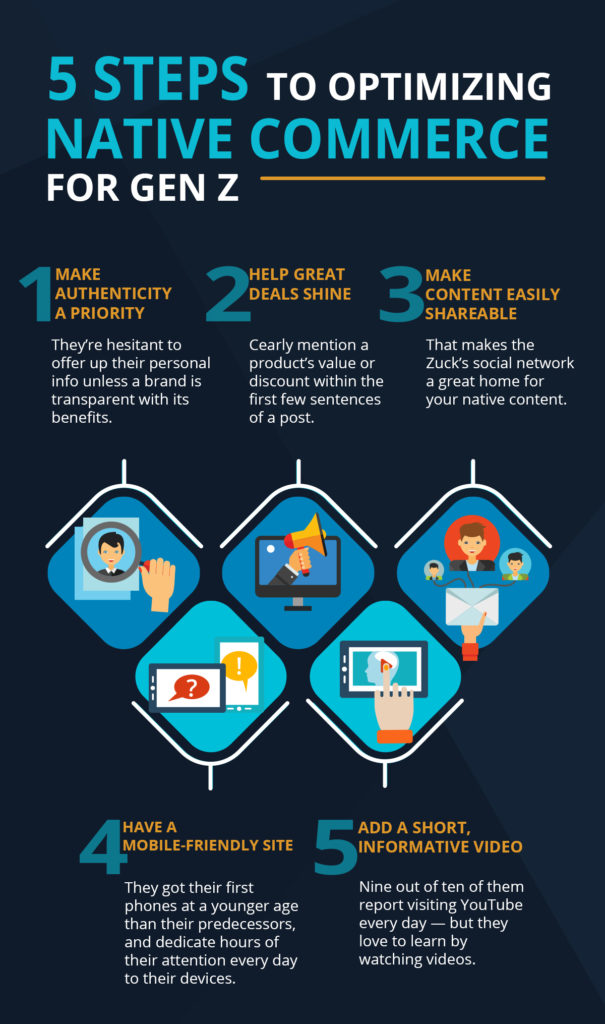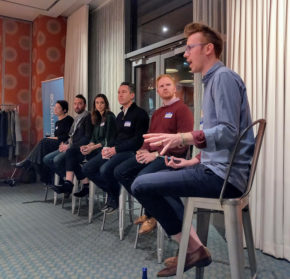
The CEO of an analytics firm once went on the record to declare that Generation Z “will be the most sophisticated consumers in the history of consumerism.” That might shock a lot of brands, as Gen Z — that is, the post-Millennial demographic born after 1997 — is perhaps most widely known as a bunch of detached, distracted screen junkies who recently decided it was cool to eat Tide Pods ironically.
Unlike their predecessors, Gen Z has had a lifelong relationship with the internet and can be tricky when it comes to marketing. Many brands simply don’t take Gen Z seriously, or even worse, just lump them in with Millennials.
Here’s the thing, though: research has shown that Gen Z’s internet-centric lifestyle has shaped them into thoughtful buyers who make well-informed purchases and eagerly interact with brands. In other words, they know what they want and aren’t afraid to seek it out. Plus, they’re on track to be the largest demographic of consumers by 2020 with enormous direct spending power — anywhere from $29 to $500 billion, depending on who you ask.
So, without further ado, here’s how you can structure your native commerce strategy so as not to miss out on Gen Z as a major market opportunity.
1. Make authenticity a priority.
Gen Zers are just like Baby Boomers in that they’re hesitant to offer up their personal info unless a brand is transparent with its benefits. And since they grew up bombarded with targeted ads, they prefer ads that are authentic and relatable, not outwardly persuasive or motivated merely by a desire to sell.
As a business, you’re best off portraying yourself to Gen Z less like a brand and more like a person. Native content make this an easy approach to adopt, providing a venue in which you can engage with the reader/consumer in a friendly, conversational voice, as if you were talking and making recommendations to an old pal rather than a client.
2. Help great deals shine.
When it comes to thriftiness, Gen Z are even shrewder than diamond-killing Millennials. In fact, experts say that modern teenagers will go so far as to encourage stronger price sensitivity within their own parents.
Since the average attention span of a Gen Zer is only about 8 seconds, it’s necessary to clearly (but casually) mention a product’s value or discount within the first few sentences of a post (in the headline is even better). Put a deal down the copy any further, and the reader will deem your message irrelevant and simply scroll on by.
3. Make your content easily shareable.
Having grown up idolizing social media influencers rather than traditional celebrities, Gen Z loves sharing content and — more importantly — loves being noticed for sharing content. Make it easier for them to do so in just a click or two by adding sharing buttons wherever possible, and making sure your site’s loading speeds are lightning fast.
Oh, and on a related note: Gen Z isn’t as active on Facebook as older generations, but that’s not to say they completely shun it. Studies have shown that they divide their time pretty evenly between Facebook, Instagram, and YouTube, with the former being used primarily for engaging with brands to find deals and discounts. That makes the Zuck’s social network a great home for your native content.
4. Add a short, informative videos to posts whenever possible.
Not only does Gen Z love to watch videos — nine out of ten of them report visiting YouTube every day — but they love to learn by watching videos. When it comes to native content, then, consider embedding clips of product demonstrations or informative footage of products in action in your posts to further engage the demographic.
That being said, make sure the clips are brief — remember, a Gen Zer’s average attention span is only a few seconds long; anything longer than a minute or so will be considered a waste of their time.
5. Having a mobile-friendly site will be even more important than it is now.
A 2017 Google report summed it up best: “While Millennials were mobile pioneers, teens are mobile natives.” They got their first phones at a younger age than their predecessors, and dedicate hours of their attention every day to their devices.
Given their intimate relationship with phones, then, it should come as no surprise that much of Gen Z’s spending is done via smartphone. As such, creating content that’s optimized for mobile viewing won’t just be an option, but an absolute must. And if you provide Gen Z with a seamless content experience that doesn’t involve waiting for pages to load or flipping between apps, you can bet that they’ll be back — wallets at the ready — time and time again.


